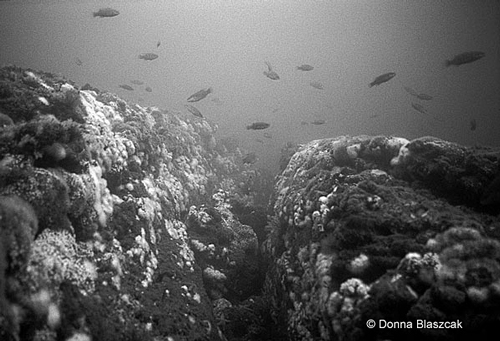Shrewsbury Rocks

The Shrewsbury Rocks are a wide area of rocky bottom that stretches from fourteen feet of water out to the fifty-foot mark off of Monmouth Beach. Some of the formations are twenty feet tall or more and can be very pretty under good conditions, which are unfortunately seldom this far north. The stone itself is a type of sandstone known as Greensand.
Further south are the Elberon Rocks ( or Grounds. ) This is a wide expanse of somewhat lower rocks and rough bottom. Much lower outcroppings occur even further south, such as the Klondike Rocks.
from AWOIS: 1538
FE331SS/89 -- OPR-C147-HE-89; CONTACT #12 FROM ABOVE SURVEY; DIVERS FOUND A LARGE ROCK THAT WAS COVERED WITH CORAL AND OTHER SEA LIFE, AND HUNDREDS OF LEAD FISHING WEIGHTS; SURROUNDING BOTTOM WAS SAND; ROCK HAS A VERY STEEP NORTH FACE AND, AT THAT POINT, RISES ABOUT 8 FT OFF THE BOTTOM; PNEUMATIC DEPTH GAUGE LEAST DEPTH OF 46 FT. (UPDATED MSD 7/91)









George Washington is reported to have fished the Shrewsbury Rocks, and on any nice day you can easily make out the location of the rocks from high on Twin Lights by the concentration of boats there. The Shrewsbury Rocks are tall enough in places to merit not just one but two navigation buoys.
Images courtesy of
Donna L. Blaszcak
uwimages@earthlink.net
Nature Photographer






Questions or Inquiries?
Just want to say Hello? Sign the .